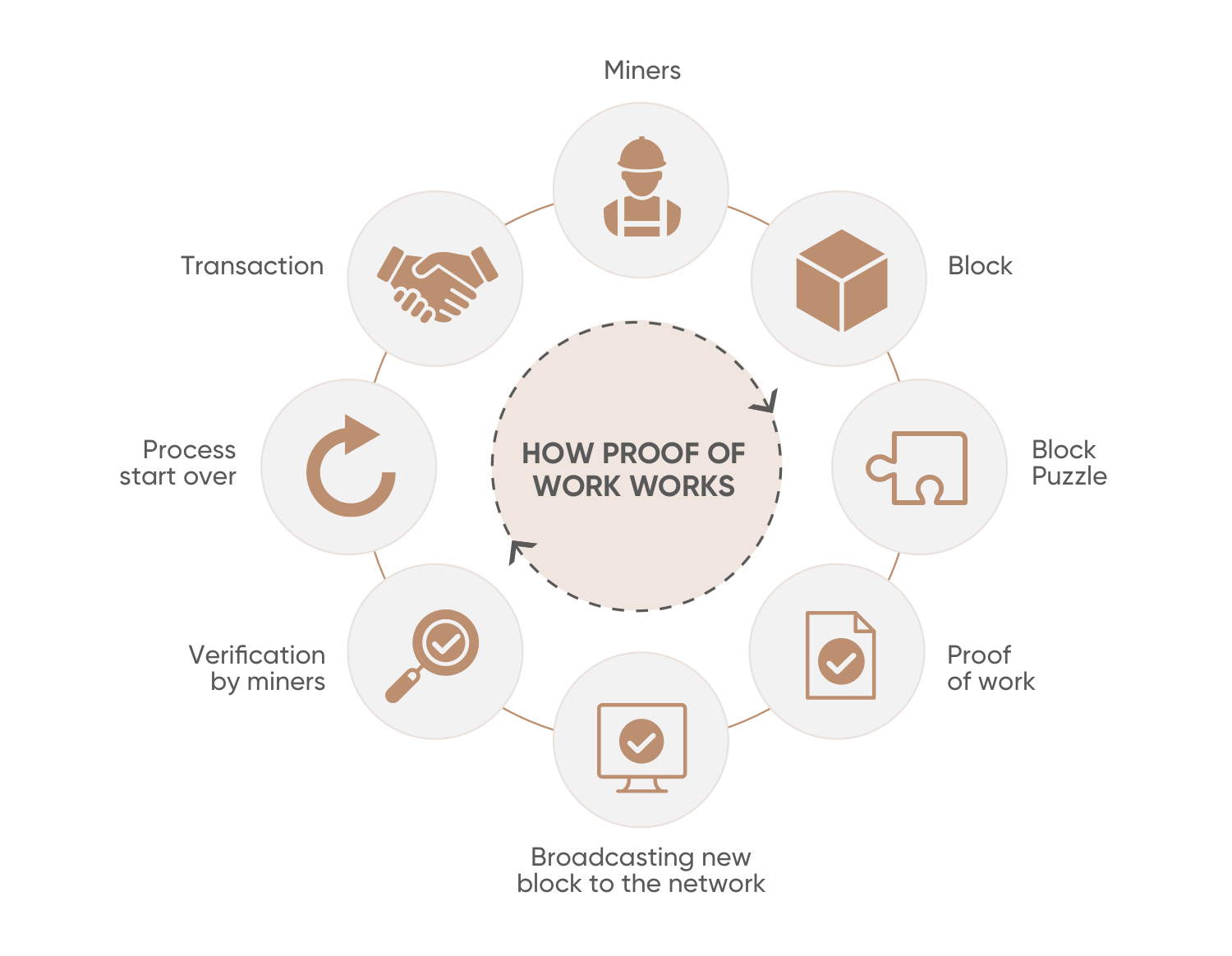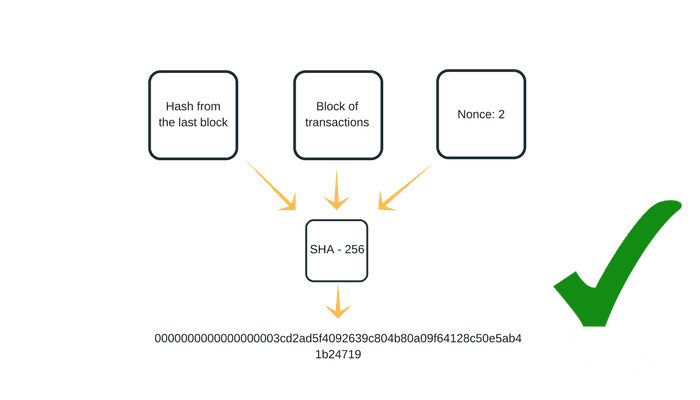Proof of Work is one of the most famous Blockchain consensus algorithms currently. So what are the advantages and disadvantages of this algorithm? How does it work?
Table of contents
- What is Proof of Work?
- How does Proof of Work work?
- The importance of Proof of Work
- Pros and cons of Proof of Work
- Future projections of Proof of Work
1. What is Proof of Work?
Proof of Work or proof of work is a consensus algorithm commonly found on blockchains, used in confirming transactions and creating new blocks on that blockchain.
Specifically, the PoW algorithm requires people who are allowed to add data or confirm transactions on a blockchain to do a lot of work. That workload can be a puzzle. Since then, transactions on the blockchain become more reliable and can be done in a peer-to-peer manner without having to go through a third party like Paypal or Momo, etc.
Bitcoin is the first coin to apply the Proof of Work mechanism, launched by Satoshi Nakamoto. Thanks to some characteristics of hashrate, halving, Bitcoin has become the king currency and a sought-after asset by many investors.
2. How does Proof of Work work?
First of all, let's find out what problem each miner solves together. The condition for a suitable problem is that the problem must be difficult enough for miners to spend a certain amount of time and effort to prevent attacks on the network, but it is not too complicated. affect transaction time. Hash function will be the answer to this question.
Hash function, Hashrate are quite strange terms, right? Here, I will not go into this, but just state some points to know about Hash Function for blockchain:
- Hash function is the process of turning an input of different sizes and types into a standard output of a certain length. Example: You use the hash function for a video or a text file so that the output will still include a string of characters of the same length.
- The characteristic of a hash function is that it is one-way. You cannot guess the input even though the output code is present.
Blockchains will use a Hash Function code (for Bitcoin, SHA 256) to generate math problems. The problem here is the output numbers and the miners' job will be to guess what the input is. To do that, the miner must run a test program to guess each input character to get the correct answer. And this is purely based on guessing, trying and repeating, because this is definitely unpredictable..
Once the first miner gets the correct input, that answer is published to the other computers of the network. Finally, the process of confirming the transactions in the block when the new block is published. For Bitcoin, each block will be published every 10 minutes, the miner who solves that block will receive the reward of that block's Bitcoin and the transaction fee in that block.
3. The importance of Proof of Work
As the name implies, Proof of Work creates a consensus mechanism that everyone validating transactions must follow to protect the blockchain's network by the following factors:
- PoW gives miners an incentive to work through the reward of new blocks. From there, miners have to work responsibly and properly verify transactions. Because if it is wrong, other nodes will replace their block and those miners will not receive the reward.
- To be a part of the network, miners need a powerful enough computer and a stable source of power to be able to solve problems. Suppose when a miner attacks the network itself and succeeds, the coin price of that blockchain will dump from there, which will adversely affect the miner itself.
- PoW turns the blockchain into a more trusted network where users can trade Peer to Peer without going through a third party. Verification will be given to all people on the network, does not require any power or financial strength, each person can become a miner.
Pow also makes it harder to attack the network. Because if one wants to attack the network, there must be more than 50 percent of the network's worldwide computing power and this will come at a huge cost.
4. Pros and cons of Proof of Work
Advantages
- Ensure the security of the entire network: With the amount of work to deal with, hacking into a Proof of Work blockchain is not possible. As a system grows and the number of transactions increases, it becomes increasingly difficult to attack the network.
- Motivating Miners: By rewarding miners who solve the first block, PoW will incentivize miners to work seriously, quickly and accurately.
- PoW helps information on Blockchain to be updated accurately, transparently and decentralized.
Defect
- With each block only containing a number of transactions and transactions have to wait after a period of time for the block to be established to confirm the transaction, as the network expands and the number of transactions increases, the number of transactions will increase. Transactions are easily congested.
- Not completely decentralized: Because the reward is only for the first miners and other miners have no income, miners tend to combine with each other, creating mining pools to be able to earn money. a power big enough to reach the finish line first. This will create a consequence that when a mining pool is too large above 50% of the total number of miners, transaction verification will no longer be decentralized and can be manipulated by the mining pool itself, causing its own inefficiency. transparent to the network.
- Consumption of energy: as a network grows and the number of transactions increases, the problem becomes increasingly difficult to solve. Having more energy to solve that problem is a dilemma sometimes the power supplied to Bitcoin miners can equal the energy of a small country.
5. Future projections of Proof of Work
Due to some of those shortcomings of POW, more and more methods are now being developed to speed up the authenticity as well as reduce energy consumption such as POS, dPOS, PoET, PBFT,... And even Ethereum too. is developing Ethereum 2.0 according to Proof of Stake mechanism to solve current problems such as energy consumption, low scalability of Proof of Work.
Consumption of energy causing a negative impact on the environment is a minus point for PoW. But if you look at it on the positive side, this is the reason that helps raise the value of a coin of Blockchain. The easy, low cost is clearly invisibly reducing the value of a coin and that is the reason Bitcoin is still being desired by the majority of miners to use the PoW mechanism.




